Menu
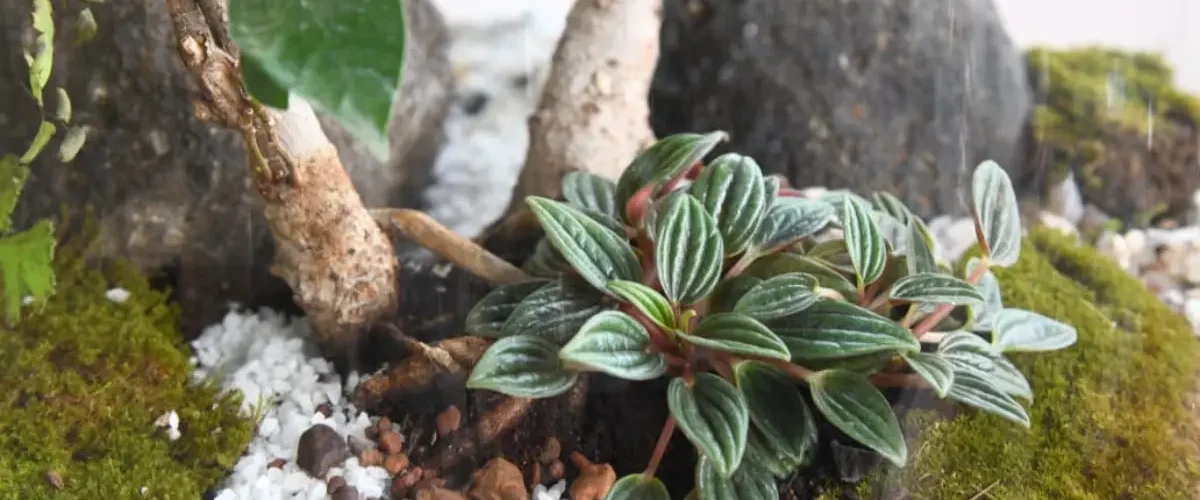
The Best Plants for a Closed Terrarium: Selecting Low-Maintenance, Humidity-Loving Species
Creating a closed terrarium is a fantastic way to add a touch of nature to your home. This self-contained ecosystem thrives with the right mix of plants that love high humidity and indirect light. Choosing the best plants is essential for maintaining a vibrant and healthy terrarium. In this blog post, we’ll explore some of the top low-maintenance, humidity-loving plants that are perfect for closed terrariums. Whether you’re a seasoned gardener or new to terrariums, this guide will help you select plants that will keep your terrarium lush and beautiful.
1. Ficus Bonsai (Ficus retusa)
Why It’s a Great Choice:
Ficus Bonsai, with its small leaves and intricate branching, adds a touch of elegance to your terrarium. It’s a hardy plant that thrives in the humid environment of a closed terrarium and requires minimal maintenance.
Care Tips:
– Light: Prefers bright, indirect light. Avoid placing it in direct sunlight as it can scorch the leaves.
– Watering: Water when the top inch of soil feels dry. Ensure good drainage to prevent waterlogging.
How to Apply:
– Pruning: Regularly trim to maintain its shape and prevent overgrowth. This helps keep the bonsai looking its best and prevents it from becoming too crowded.
2. Aglaonema
Why It’s a Great Choice:
Aglaonema, also known as Chinese Evergreen, is known for its attractive foliage and adaptability. It thrives in the humid conditions of a closed terrarium and adds vibrant color with its variegated leaves.
Care Tips:
– Light: Thrives in low to moderate light. Too much direct light can cause the leaves to fade or burn.
– Watering: Keep the soil evenly moist but not soggy. Allow the top layer of soil to dry out slightly between waterings.
How to Apply:
– Leaf Care: Clean leaves occasionally to remove dust and maintain their vibrant appearance. This also helps with the plant’s overall health.
3. Aralia
Why It’s a Great Choice:
Aralia is a versatile plant with a unique appearance, featuring intricate leaf patterns and a bushy growth habit. It adapts well to the closed terrarium environment and adds a touch of exotic charm.
Care Tips:
– Light: Prefers bright, indirect light. Avoid direct sunlight which can cause leaf burn.
– Watering: Water regularly to keep the soil moist, but avoid overwatering. Ensure the terrarium has good air circulation to prevent root rot.
How to Apply:
– Growth Management: Regularly prune to control its size and shape, preventing it from outgrowing the terrarium.
4. Fittonia (Fittonia verschaffeltii)
Why It’s a Great Choice:
Fittonia, or nerve plant, is renowned for its vibrant leaf patterns and adaptability to high humidity. Its compact size and colorful leaves make it a perfect addition to closed terrariums.
Care Tips:
– Light: Enjoys low to moderate light. Direct sunlight can cause leaf burn, so provide bright, indirect light.
– Watering: Keep the soil consistently moist. Fittonia is sensitive to drying out, so monitor moisture levels closely.
How to Apply:
– Humidity: Ensure high humidity by keeping the terrarium closed or lightly misting the plants. This helps Fittonia thrive and maintain its vibrant colors.

5. Umbrella Plant (Schefflera arboricola)
Why It’s a Great Choice:
The Umbrella Plant is a resilient species that adds a lush, tropical feel to your terrarium. Its glossy, umbrella-like leaves thrive in the humid environment of a closed terrarium.
Care Tips:
– Light: Prefers bright, indirect light. Avoid direct sunlight which can scorch its leaves.
– Watering: Water when the top inch of soil feels dry. Ensure proper drainage to avoid waterlogging and root rot.
How to Apply:
– Pruning: Regularly prune to maintain its shape and size. This helps prevent overcrowding in the terrarium.
6. Syngonium (Syngonium podophyllum)
Why It’s a Great Choice:
Syngonium, also known as Arrowhead Vine, is a fast-growing plant with attractive, arrow-shaped leaves. It adapts well to the closed terrarium environment and adds a touch of greenery.
Care Tips:
– Light: Thrives in low to moderate light. Too much direct light can cause leaf burn.
– Watering: Keep the soil consistently moist but not soggy. Allow the top layer to dry out slightly between waterings.
How to Apply:
– Training: Use a small trellis or support if you want to guide its growth. Regular trimming helps keep it manageable and prevents overgrowth.
7. Alocasia
Why It’s a Great Choice:
Alocasia, with its large, striking leaves, adds a dramatic touch to your terrarium. It thrives in high humidity and adds an exotic flair to the miniature ecosystem.
Care Tips:
– Light: Prefers bright, indirect light. Too much direct sunlight can cause the leaves to scorch.
– Watering: Keep the soil moist but well-drained. Alocasia prefers high humidity, so ensure the terrarium is properly sealed to maintain moisture levels.
How to Apply:
– Humidity: Monitor humidity levels closely. Alocasia thrives in a consistently humid environment, so regular misting or maintaining a closed lid is beneficial.
FAQs About Selecting Plants for Closed Terrariums
1. Can I mix different types of plants in a closed terrarium?
Yes, you can mix various plants as long as they have similar light and humidity requirements. Combining different species can create a diverse and visually appealing terrarium.
2. How often should I water my closed terrarium?
Watering frequency varies depending on the plant species and terrarium conditions. Generally, water when the top inch of soil feels dry. Monitor the environment to avoid overwatering.
3. Do closed terrariums need additional lighting?
Closed terrariums typically need bright, indirect light. If natural light is insufficient, consider using grow lights to provide the necessary light for your plants.
4. What should I do if my terrarium plants start to show signs of disease?
Remove affected plant material and adjust environmental conditions such as light, humidity, and watering practices. Consider using natural pest control methods if pests are the cause.
5. How can I prevent mold in my terrarium?
Ensure proper ventilation by occasionally opening the lid. Avoid overwatering and remove any decaying plant material promptly to prevent mold growth.
Conclusion
Selecting the right plants for your closed terrarium is essential for creating a lush, healthy, and visually appealing indoor garden. By choosing low-maintenance, humidity-loving species like Ficus Bonsai, Aglaonema, Aralia, Fittonia, Umbrella Plant, Syngonium, and Alocasia, you can ensure your terrarium remains vibrant and beautiful. For more tips on terrarium care and to explore a range of self-sustaining closed terrariums and supplies, visit our terrarium shop online.
Checkout our Latest Products
-
-10%
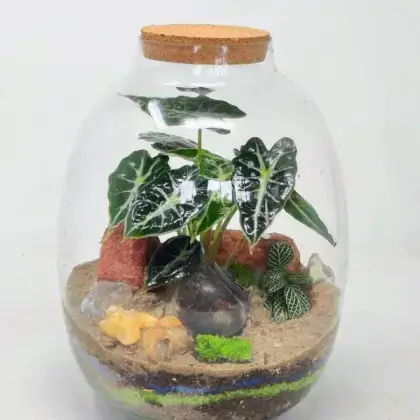 This product has multiple variants. The options may be chosen on the product page
This product has multiple variants. The options may be chosen on the product page10″ Oakley Closed Terrarium
₹2,500.00Original price was: ₹2,500.00.₹2,250.00Current price is: ₹2,250.00. -
-10%
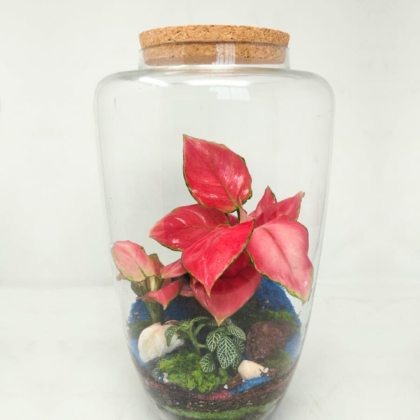 This product has multiple variants. The options may be chosen on the product page
This product has multiple variants. The options may be chosen on the product page14″ Arcadia Closed Terrarium
₹3,500.00Original price was: ₹3,500.00.₹3,150.00Current price is: ₹3,150.00. -
-10%
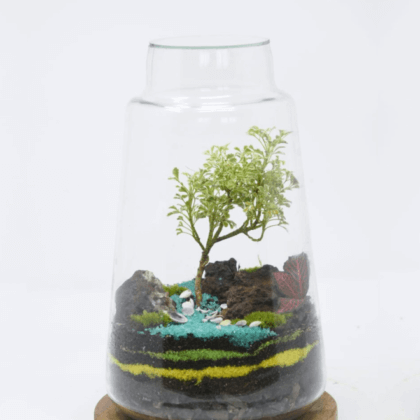 This product has multiple variants. The options may be chosen on the product page
This product has multiple variants. The options may be chosen on the product page10″ Cone Closed Terrarium
₹2,500.00Original price was: ₹2,500.00.₹2,250.00Current price is: ₹2,250.00. -
-10%
 This product has multiple variants. The options may be chosen on the product page
This product has multiple variants. The options may be chosen on the product page10″ Pop-up Jar Closed Terrarium
₹1,700.00Original price was: ₹1,700.00.₹1,530.00Current price is: ₹1,530.00. -
-10%
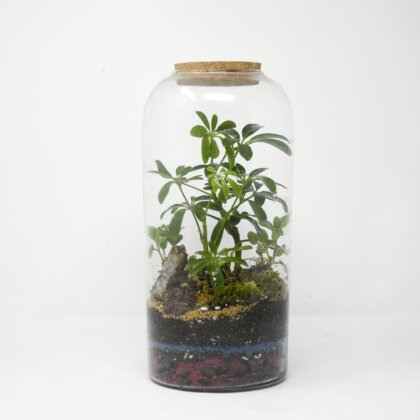 This product has multiple variants. The options may be chosen on the product page
This product has multiple variants. The options may be chosen on the product page11″ Papaya Jar Closed Terrarium
₹2,500.00Original price was: ₹2,500.00.₹2,250.00Current price is: ₹2,250.00. -
-10%
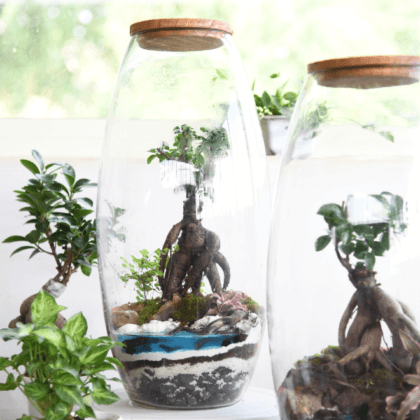 This product has multiple variants. The options may be chosen on the product page
This product has multiple variants. The options may be chosen on the product page19″ Dome Closed Terrarium
₹5,500.00Original price was: ₹5,500.00.₹4,950.00Current price is: ₹4,950.00. -
-10%
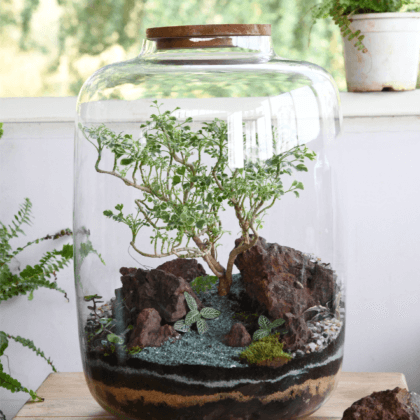 This product has multiple variants. The options may be chosen on the product page
This product has multiple variants. The options may be chosen on the product page15″ Amazonia Closed Terrarium
₹7,000.00Original price was: ₹7,000.00.₹6,300.00Current price is: ₹6,300.00.




